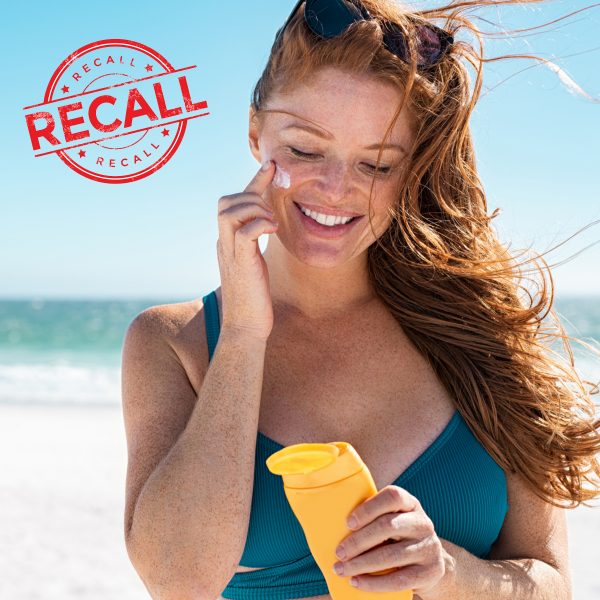
2021 has not been kind to sunscreen. In January, Hawaii banned the sale of over-the-counter sunscreens containing oxybenzone and octinoxate in order to protect Hawaii’s marine environment. Most recently, Johnson & Johnson recalled six of its Neutrogena and Aveeno spray sunscreens after detecting benzene, a potentially cancer-causing chemical, in some samples. “Both of these concerns are valid,” stated Dr. Betsy Wernli, President of and Board-Certified Dermatologist with Forefront Dermatology. “We should be concerned about our environment and all products we ingest or apply on our skin on a daily basis. These recalls and regulations though should not undermine the vital role sunscreen plays in protecting our skin from UV exposure – the #1 contributor to skin cancer.”
With both the Johnson & Johnson recall and the environmental regulations in place there will likely be a much larger push towards the use of mineral-based sunscreens versus chemical sunscreens. According to Dr. Wernli, “It is always best to do your research no matter what product you use, but when it comes to sunscreen, mineral-based and chemical-containing each come with their own set of pros and cons and how they function.”
What is benzene and why is it in my sunscreen?
Benzene is classified as a carcinogen, which means it can potentially cause cancer in humans. It is used in plastic manufacturing and is not routinely tested as a component of sunscreen. When the recent Johnson & Johnson scare occurred, it was found in the aerosol-based sunscreen products, which have been recalled. According to Dr. Wernli, “Two things I want my patients to know about benzene: it is not a component of sunscreen, not used in producing a sun-protective product. It was found in the current sunscreens recalled as a contaminant. The second important point is not to confuse benzene with avobenzone. These two products have no relation to each other, one being a solvent used in plastic manufacturing and a known carcinogen, the other being a chemical sunscreen without carcinogenic properties. One last important point is that oxybenzone was banned in Hawaii due to concerns about damage to the reef. This product also is not related to benzene and is not a carcinogen.’
What is the difference between chemical sunscreen and mineral sunscreen?
“Chemical sunscreens typically contain organic compounds, such as oxybenzone, octinoxate, octisalate and avobenzone. In Johnson & Johnson’s case, traces of benzene were detected,” noted Dr. Wernli. “The ingredients in chemical sunscreens absorb UV rays as they attempt to enter the skin. Mineral sunscreens on the other hand contain active mineral ingredients, such as titanium dioxide or zinc oxide. Instead of absorbing UV rays, mineral sunscreen sits on top of the skin and deflects damaging UV rays away from the skin.”
Is mineral sunscreen better than chemical sunscreen?
From an environmental standpoint, as the Hawaiian law points out, chemical sunscreen is damaging to marine environments, and therefore mineral sunscreen would be the best option for sunscreen. Outside of the environmental impact, both mineral sunscreen and chemical sunscreen come with their own sets of pros and cons that, as an individual, you should weigh and determine what is important to you:
Mineral Sunscreen Pros:
- Mineral sunscreen offers protection against both UVA and UVB rays and is naturally broad-spectrum
- Mineral sunscreen protects from the sun as soon as it’s applied, no wait is needed
- Mineral sunscreen lasts longer when in direct UV light than chemical sunscreen, but not when wet or sweating
Chemical Sunscreen Pros:
- Chemical sunscreen tends to be thinner and spreads more easily on the skin
- Chemical sunscreen requires less product than mineral for full protection
Mineral Sunscreen Cons:
- Mineral sunscreen can rub off, sweat off, and rinse off easily, requiring more frequent reapplication when outdoors
- Mineral sunscreen can be less protective since UV light can penetrate between the sunscreen molecules if not broadly applied
- Mineral sunscreen can leave a white film on the skin, making some formulas less desirable for medium to dark skin tones
- Mineral sunscreen tends to be more expensive than chemical sunscreen
Chemical Sunscreen Cons:
- Chemical sunscreen requires about 20 minutes after application before it begins to protect your skin
- Chemical sunscreen can be irritating to sensitive skin types since it contains multiple ingredients to achieve broad-spectrum UVA and UVB protection
- The protection chemical sunscreen provides doesn’t last as long in direct UV light, so re-application must be top of mind
The Importance of sunscreen does not disappear amid Johnson & Johnson recalls
Sunscreen is the number one tool to protect your skin from the damage caused by the sun’s UV rays – damage that includes skin cancer, the most common cancer in the United States. According to the American Academy of Dermatology, an estimated 196,060 new cases of melanoma, 101,280 non-invasive (in situ) and 106,110 invasive, will be diagnosed in the United States in 2021 alone. This does not take into account the risk of developing squamous cell carcinoma and basal cell carcinoma, necessitating extensive surgical removals for patients.
“It is important to do your research on what sunscreen you most feel comfortable using. If you are still confused or have concerns, talk with your board-certified dermatologist,” added Dr. Wernli. “And most importantly, see your dermatologist annually for a skin cancer examination. If detected early, skin cancer is highly treatable, but delayed diagnosis of melanoma leads to the death of over 20 Americans a day. As a dermatologist, my dream is to see that number drop to zero, but this takes effort on the patients’ part, with regular skin checks, and protective measures from the sun with sunscreen and sun-protective clothing.”
Have you had your annual skin cancer screening?
Early detection saves lives. Find a Forefront Dermatology location near you and schedule your appointment today.





